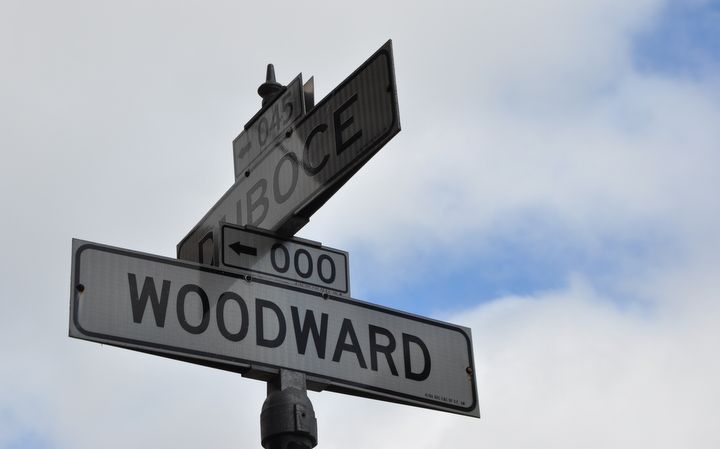Last Chance to Catch NYC's Holiday Notalgia Train
We met the voices of the NYC subway on our nostalgia ride this weekend!



On January 19, 1873, 12,000 people showed up at Woodward’s Garden in the Mission District to watch Frenchman Gus Buislay and a small boy soar aloft in a hot air balloon. The man who made it happen was Robert B. Woodward.
Woodward had made his fortune in the grocery store business. In 1849, he opened a store right off the waterfront to serve the ever-increasing number of people flooding into the Port of San Francisco for the Gold Rush.
With the acumen of a savvy businessman, he realized the ’49er economy was moving from supplies to service, and so in 1852 Woodward opened What Cheer House, a hotel and club for men known for its good food, safe accommodations and no alcohol policy.
Woodward’s family left Providence, Rhode Island, in 1857 to join him in California. Woodward purchased four acres of land and a house that had belonged to General John C. Fremont. The property was located on the west side of Mission Street between 14th and 15th Streets. He and his family lived in Fremont’s house while he worked to construct a mansion on one of the many hillocks in the area.
A year-long shopping trip to Europe would necessitate the construction of a gallery and conservatory on his property. Here he could show off the copies of famous sculptures he had had made, as well as paintings and other curiosities he had collected. But the true show piece of Woodward’s estate was its fantastic gardens.
Woodward began these gardens during the original construction of the house. Supplied in 1861 with plants, animals and artifacts from Europe, soon the gardens came to be referred to as the Central Park of the West. In 1864, he opened the estate to friends and acquaintances.
As the garden’s fame spread, members of the public began to stand outside for hours on Sundays, hoping to get a peek of the grounds. In 1866, with a little nudging from his daughter the grounds were open to the public. Woodward moved his family to the Napa Valley and dedicated his time to expanding his San Francisco Woodward Gardens for the enjoyment of its visitors.
Recognizing the need for a constantly changing array of attractions, Woodward once again headed to Europe, bringing back crates of items ranging from the fashionable to the odd. Sailors he had befriended over the years also brought him curiosities from around the world.
It was said that Woodward Gardens held the finest zoo on the west coast, with camels, zebras, buffalo, deer and even kangaroos. There was also a bear pit that held both grizzlies and black bears.
In 1873 Woodward opened an aquarium with sixteen tanks that held from 300 to 1000 gallons of fresh or salt water. The lighting of the tanks allowed visitors to see marine creatures in their natural environment. Visitors were entertained by the crabs, lobsters, shark, cod, flounders, rays, and the occasional ink-spitting octopus.
An amphitheater-that held 5000 people-presented shows featuring Delhi Fire-Eaters, Japanese Acrobats, Roman chariot races and Major Burke and his Rifle Review.
Woodward’s home became the Museum of Miscellanies-a pair of 10,000-year-old mastodon tusks graced the front door. The house contained a mineral display as well as fossils and zoological specimens. At one point park goers could view the “largest gold nugget ever found” from the Sierra Butte mine, a privilege they purchased with an additional .25 cents.
There were several restaurants on the grounds, and, just like What Cheer House, they did not serve alcohol.
General Ulysses S. Grant visited the Garden in 1879. That same year Robert B. Woodward passed away. Although his sons took over the running of Woodward Gardens, they lacked their father’s showmanship and could never match his enthusiasm for the place.
When the park closed in 1894, all the artifacts were sold at auction. Developers stepped in, graded the land, divided it into 39 separate lots and sold them-to become homes for the working class of San Francisco.
While many people have never heard of Woodward Gardens, or could not conceive of a four-acre park filled with such wonders and curiosities in the Mission District, some signs hint to its existence. Today, Woodward Gardens Restaurant sits at the corner of Mission and 13th. Alas, the restaurant has no wandering ostriches or playful seals.
Follow Untapped Cities on Twitter and Facebook. Get in touch with the author @PQPP3.
Subscribe to our newsletter